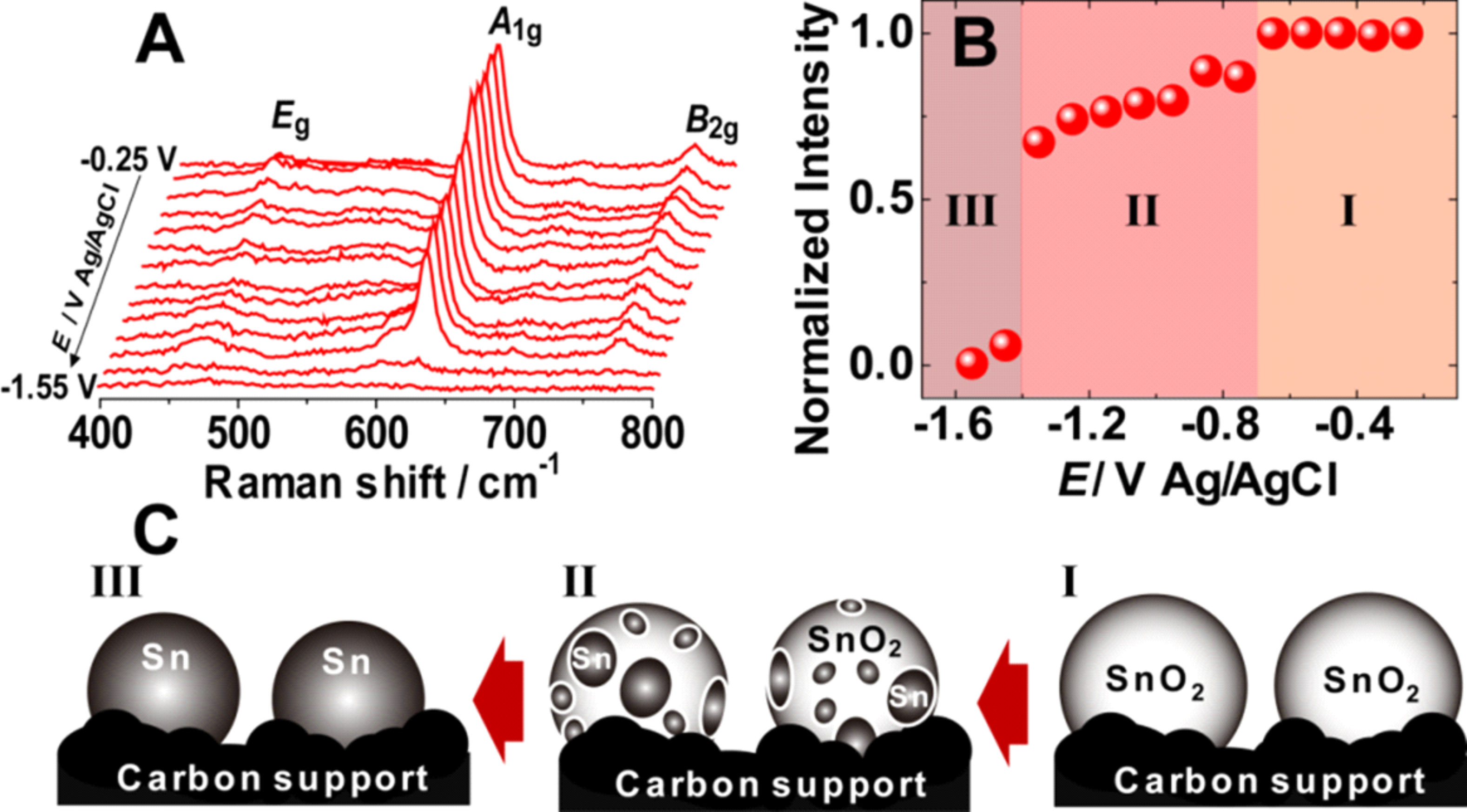Mechanistic elucidation on the stability of SnO2 NPs under electrochemical CO2 reduction condition: An in operando Raman Spectroscopy study
In this present study we demonstrate degradation effects on the basis of a direct electro-reduction process of CO2 taking place on a SnO2 NP catalyst supported on reduced graphene oxide (rGO). The field of CO2 electro-catalysis is rapidly growing due to the global demand for new technologies which allow for the reduction of CO2 in the atmosphere and to store at the same time excesses of electric energy from wind and solar sources in form of a reduced carbon compound. In this respect, an electrochemical approach towards the conversion of CO2 into more valuable products seems to be highly promising. The SnO2 NP catalyst supported on reduced graphene oxide (rGO) shows a superior activity and selectivity towards the formation of formate with Faradaic efficiencies (FEs) above 80%. However, our study also demonstrates that the Faradaic efficiencies crucially depend on the applied electrode potential and the pH of the electrolyte. The SnO2 NPs themselves undergo at cathodic potentials an electro-reduction reaction transforming the SnO2 (SnIV) into metallic tin (Sn0). This chemical transition can be monitored potential and time dependent by in operando (this is, during an ongoing CO2 electroreduction) Raman spectroscopy (Fig.1). This catalyst degradation is accompanied by a significant drop down of the Faradaic efficiency of formate formation. Highest efficiencies are actually obtained under conditions where the NP is neither fully oxidized nor fully reduced and consist of a Sn/SnO2 composite. The post-electrolysis characterization of the catalyst material reveals a full recovery of the SnO2. This result emphasizes once more the importance of an in operando identification of the catalytically active species as basis for the elucidation of reaction mechanisms.

Fig.1 In operando Raman studies at varied potential (A) The relative intensities of the SnIV-related A1g Raman peaks (B). In the three distinct potential regions represented by the shaded background, the catalyst is in the form of fully oxidized SnO2 (I), a partially reduced compound of mixed oxidation state (II) and completely reduced metallic Sn (III), as illustrated by the scheme of (C).
[1] A.Dutta, A. Kuzume, M. Rahaman, S.Vesztergom, P. Broekmann,. ACS Catal. 2015, 5 (12), 7498−7502
[2] M. Sackmann, A. Materny J. Raman Spectrosc. 2006, 37, 305−310
[3] I. E. Wachs, C. A. Roberts Chem. Soc. Rev., 2010, 39, 5002–5017